“The Tokyo Metropolitan Central Wholesale Market, commonly known as the Tsukiji Market, is the biggest wholesale fish and seafood market in the world and also one of the largest wholesale food markets of any kind. The market is located in Tsukiji in central Tokyo, and is a major attraction for foreign visitors.
The market handles more than 400 different types of seafood from cheap seaweed to the most expensive caviar, and from tiny sardines to 300 kg tuna and controversial whale species. Overall, more than 700,000 metric tons of seafood are handled every year at the three seafood markets in Tokyo, with a total value in excess of 600 billion yen (approximately 5.5 billion US dollars). Tsukiji alone handles over 2000 metric tons of seafood per day. The number of registered employees as of 25 January 2010 varies from 60,000 to 65,000, including wholesalers, accountants, auctioneers, company officials, and distributors.
The market opens most mornings (except Sundays, holidays and some Wednesdays) at 3:00 a.m. with the arrival of the products by ship, truck and plane from all over the world. Particularly impressive is the unloading of tons of frozen tuna. The auction houses (wholesalers known in Japanese as oroshi gyōsha) then estimate the value and prepare the incoming products for the auctions. The buyers (licensed to participate in the auctions) also inspect the fish to estimate which fish they would like to bid for and at which price.
The auctions start around 5:20 a.m. Bidding can only be done by licensed participants. These bidders include intermediate wholesalers (nakaoroshi gyōsha) who operate stalls in the marketplace and other licensed buyers who are agents for restaurants, food processing companies, and large retailers.
The auctions usually end around 7:00 a.m. Afterward, the purchased fish is either loaded onto trucks to be shipped to the next destination or on small carts and moved to the many shops inside the market. There the shop owners cut and prepare the products for retail. In case of large fish, for example tuna and swordfish, cutting and preparation is elaborate. Frozen tuna and swordfish are often cut with large band saws, and fresh tuna is carved with extremely long knives (some well over a meter in length) called oroshi hocho, maguro-bocho, or hancho hocho.
The market is the busiest between 5:30 and 8:00 a.m., and the activity declines significantly afterward. Many shops start to close around 11:00 a.m., and the market closes for cleaning around 1:00 p.m. Tourists may visit the market daily between 5 a.m. and 6:15 a.m. and watch the proceedings from a designated area, except during periods when it is closed to the public. Due to the recent earthquakes all tourists have been banned from viewing the tuna auctions with no date given for re-opening”. – Wikipedia
The market handles more than 400 different types of seafood from cheap seaweed to the most expensive caviar, and from tiny sardines to 300 kg tuna and controversial whale species. Overall, more than 700,000 metric tons of seafood are handled every year at the three seafood markets in Tokyo, with a total value in excess of 600 billion yen (approximately 5.5 billion US dollars). Tsukiji alone handles over 2000 metric tons of seafood per day. The number of registered employees as of 25 January 2010 varies from 60,000 to 65,000, including wholesalers, accountants, auctioneers, company officials, and distributors.
The market opens most mornings (except Sundays, holidays and some Wednesdays) at 3:00 a.m. with the arrival of the products by ship, truck and plane from all over the world. Particularly impressive is the unloading of tons of frozen tuna. The auction houses (wholesalers known in Japanese as oroshi gyōsha) then estimate the value and prepare the incoming products for the auctions. The buyers (licensed to participate in the auctions) also inspect the fish to estimate which fish they would like to bid for and at which price.
The auctions start around 5:20 a.m. Bidding can only be done by licensed participants. These bidders include intermediate wholesalers (nakaoroshi gyōsha) who operate stalls in the marketplace and other licensed buyers who are agents for restaurants, food processing companies, and large retailers.
The auctions usually end around 7:00 a.m. Afterward, the purchased fish is either loaded onto trucks to be shipped to the next destination or on small carts and moved to the many shops inside the market. There the shop owners cut and prepare the products for retail. In case of large fish, for example tuna and swordfish, cutting and preparation is elaborate. Frozen tuna and swordfish are often cut with large band saws, and fresh tuna is carved with extremely long knives (some well over a meter in length) called oroshi hocho, maguro-bocho, or hancho hocho.
The market is the busiest between 5:30 and 8:00 a.m., and the activity declines significantly afterward. Many shops start to close around 11:00 a.m., and the market closes for cleaning around 1:00 p.m. Tourists may visit the market daily between 5 a.m. and 6:15 a.m. and watch the proceedings from a designated area, except during periods when it is closed to the public. Due to the recent earthquakes all tourists have been banned from viewing the tuna auctions with no date given for re-opening”. – Wikipedia
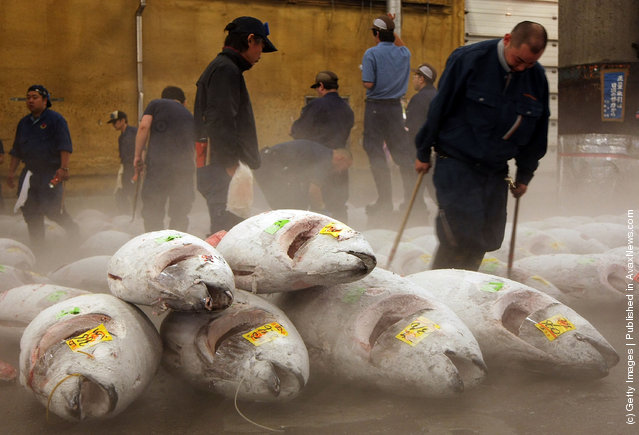
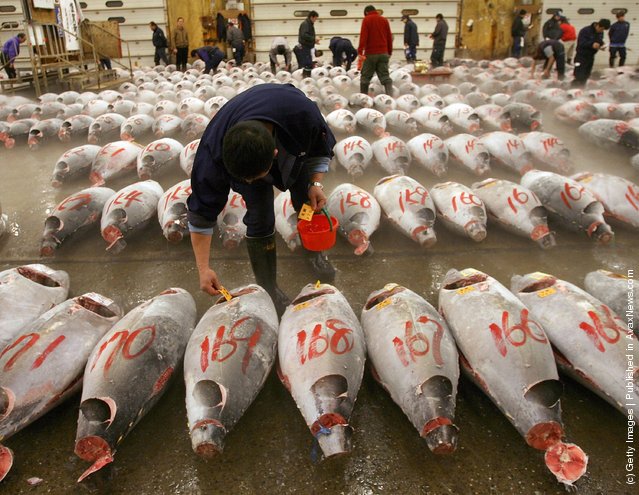
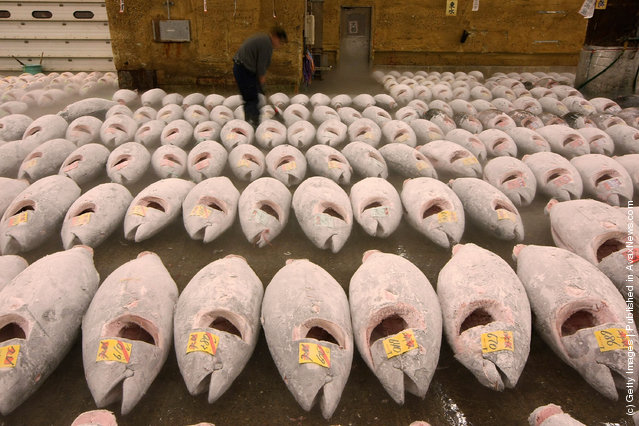
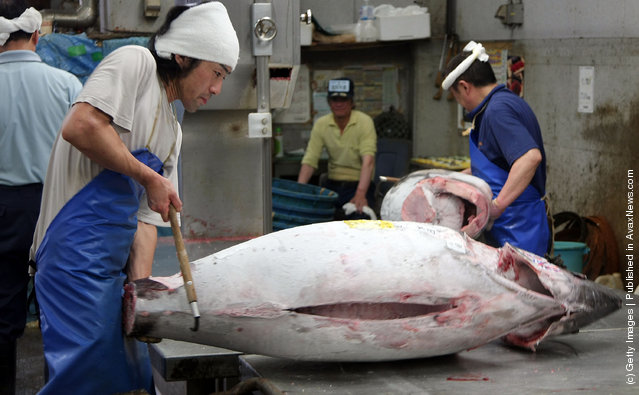
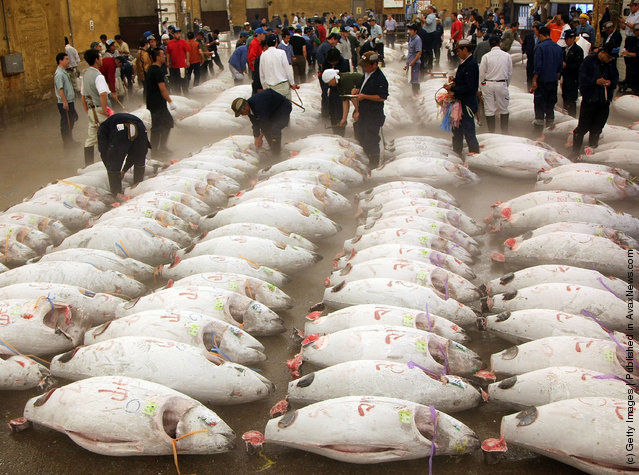
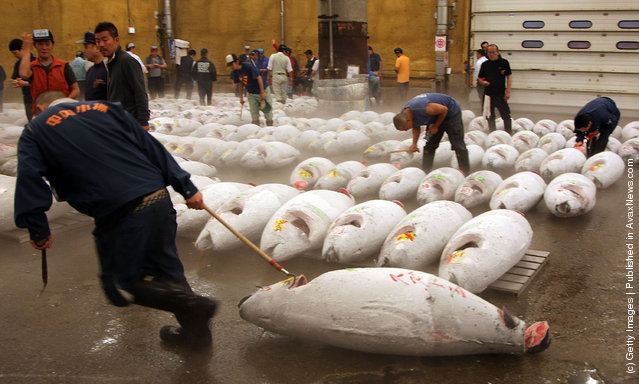
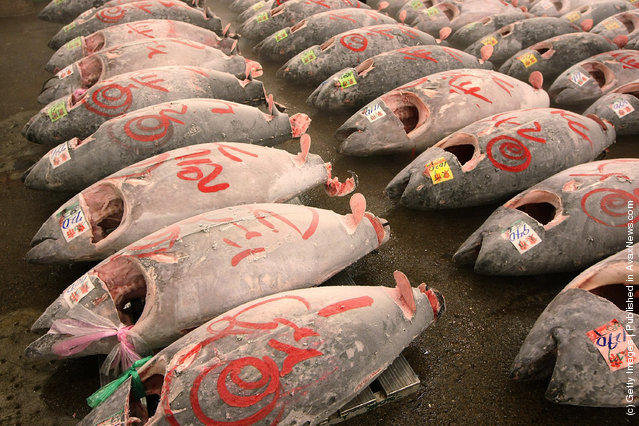
Frozen tuna lie on the ground during the new year's first auction at the Tsukiji fish market on January 5, 2008 in Tokyo, Japan. (Photo by Koichi Kamoshida/Getty Images)
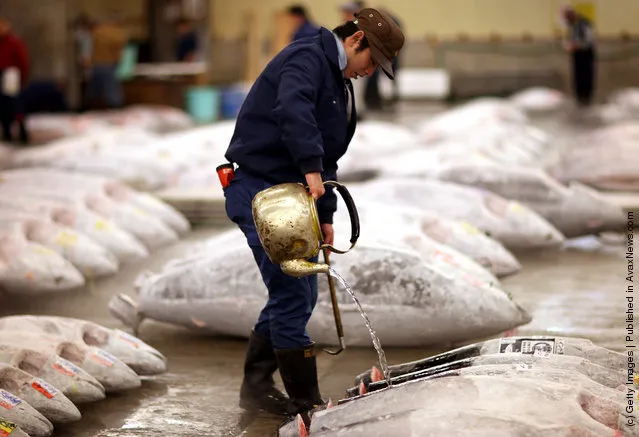
Frozen fish are defrosted at Tsukiji Fish Market on October 30, 2008 in Tokyo, Japan. (Photo by Chris Jackson/Getty Images)
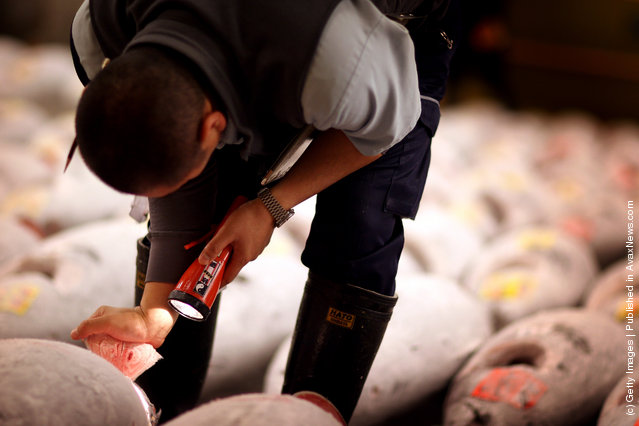
A worker checks the quality of fish at Tsukiji Fish Market on October 30, 2008 in Tokyo, Japan. (Photo by Chris Jackson/Getty Images)
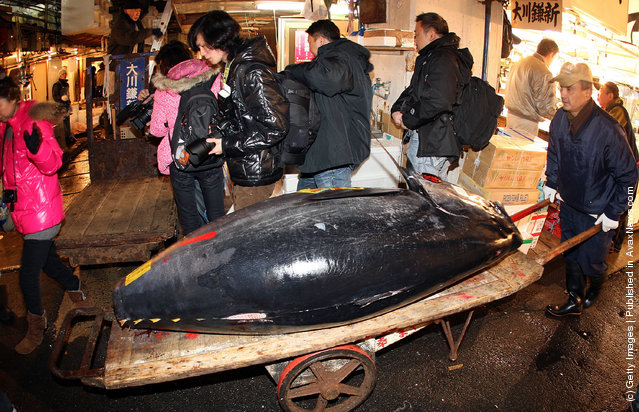
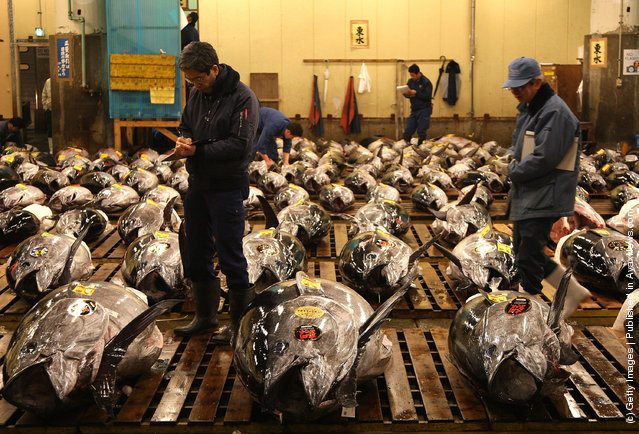
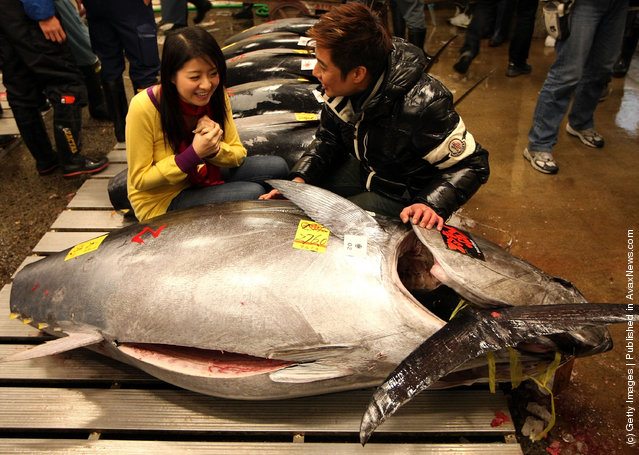
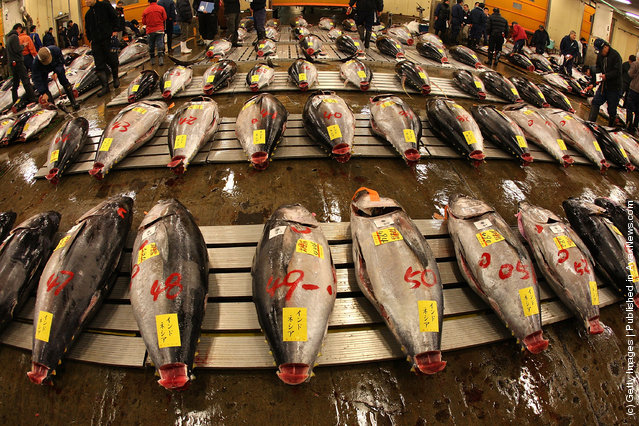
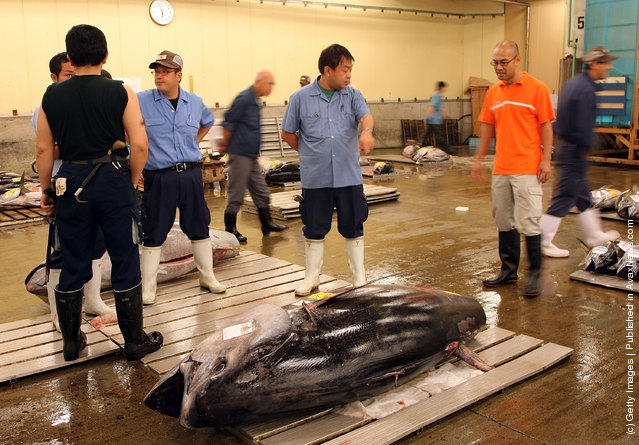
Wholesalers check the quality of frozen tuna at Tsukiji Fish Market on July 17, 2008 in Tokyo, Japan. (Photo by Koichi Kamoshida/Getty Images)
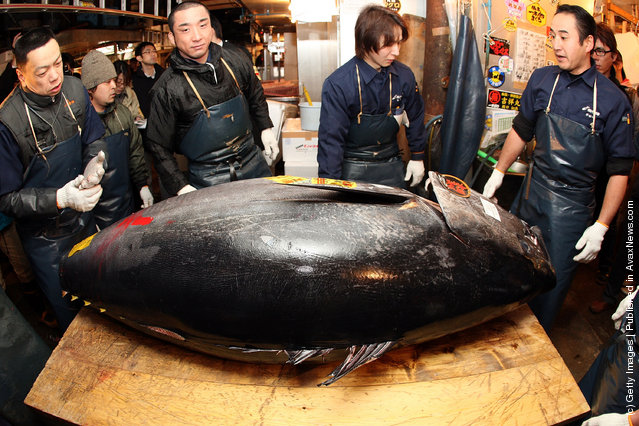
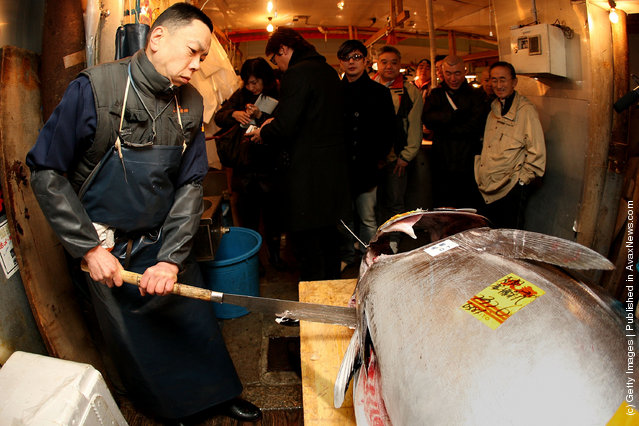
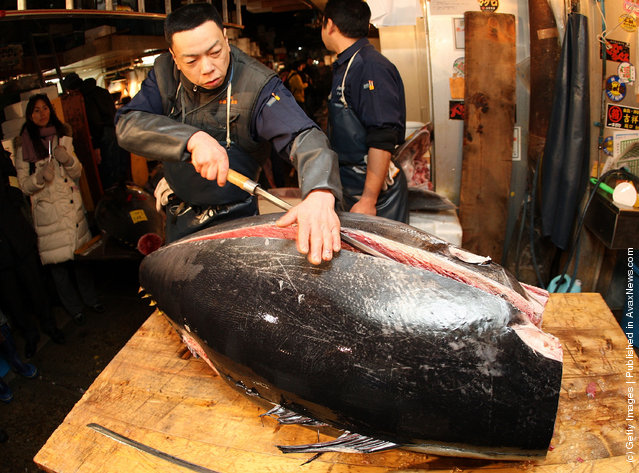
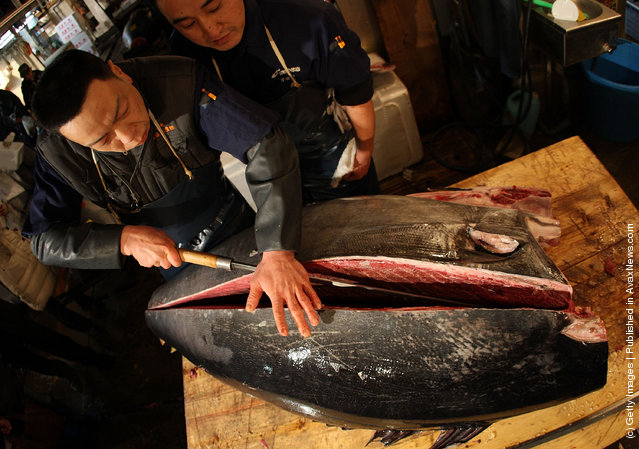
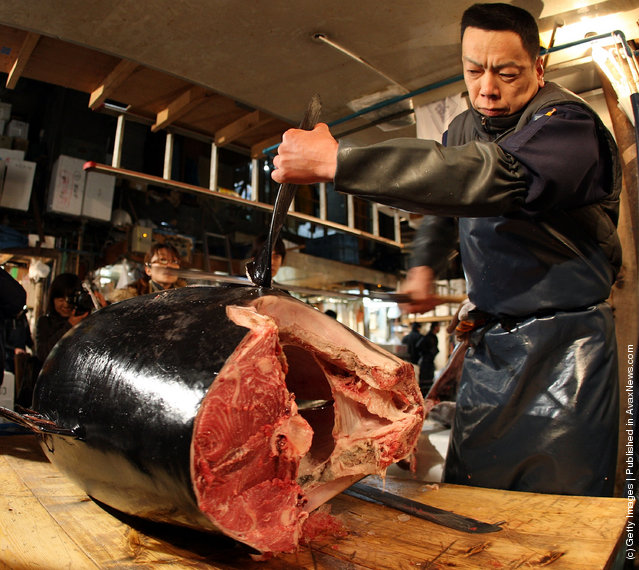
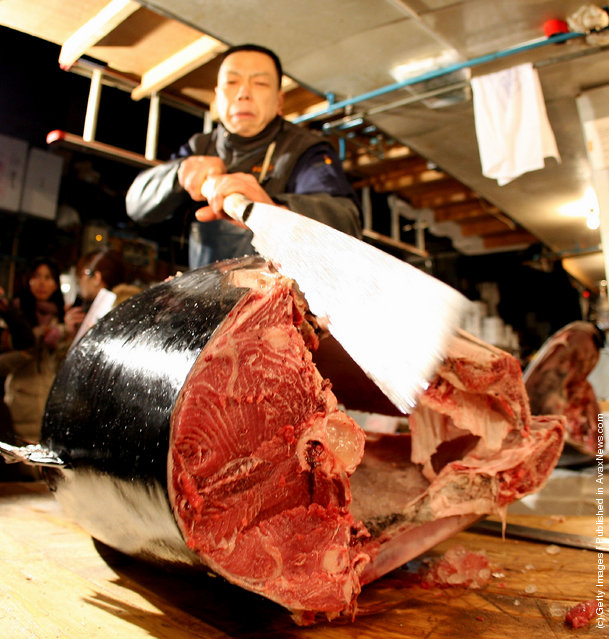
A market wholesaler cuts up a 232-plus kilogram tuna during the new year's first auction at the Tsukiji fish market on January 5, 2010 in Tokyo, Japan. (Photo by Koichi Kamoshida/Getty Images)
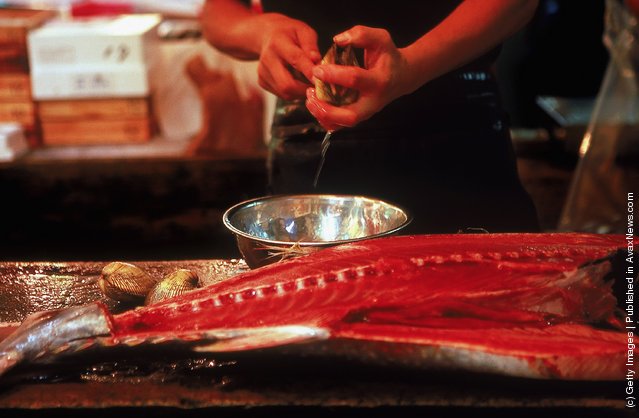
A fishmonger cleans a shell fish at Tsukiji Fish Market August 2, 2006 in Tokyo, Japan. (Photo by Cameron Spencer/Getty Images)
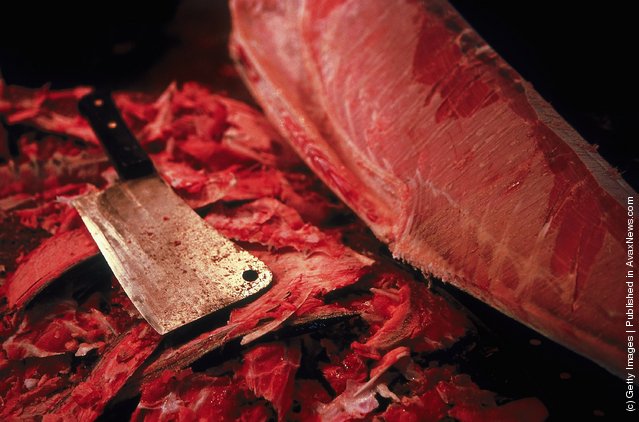
A knife is seen on slices of tuna at the Tsukiji Fish Market August 2, 2006 in Tokyo, Japan. (Photo by Cameron Spencer/Getty Images)
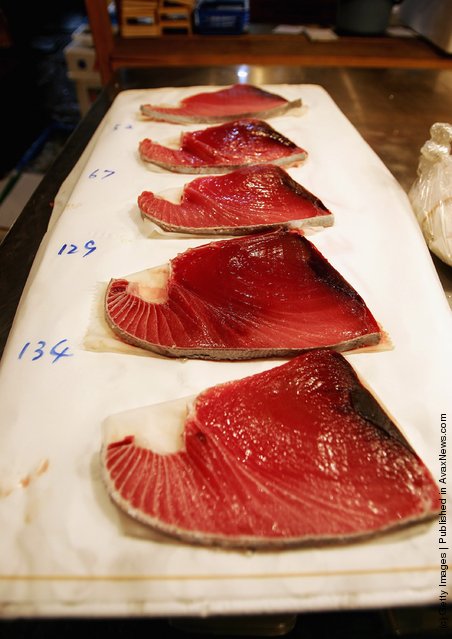
Tuna steaks for sale are displayed at Tsukiji Fish Market February 17, 2006 in Tokyo, Japan. (Photo by Cameron Spencer/Getty Images)
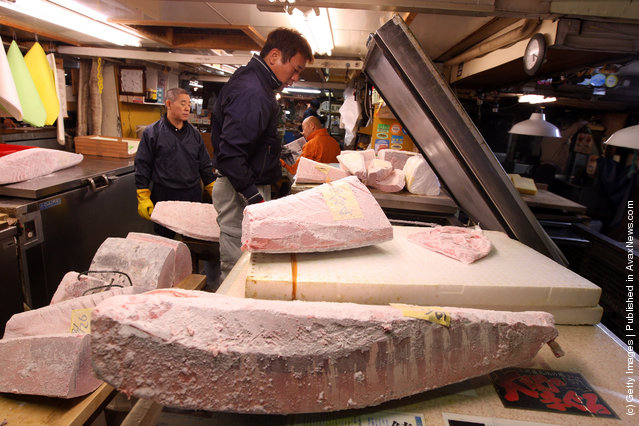
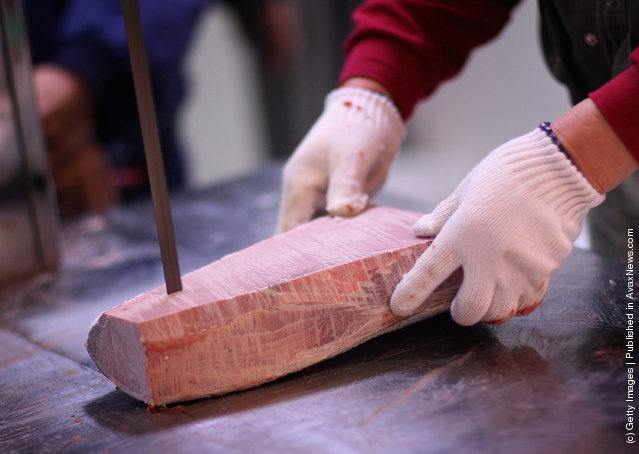
A worker cuts frozen fish at Tsukiji Fish Market on October 30, 2008 in Tokyo, Japan. (Photo by Chris Jackson/Getty Images)
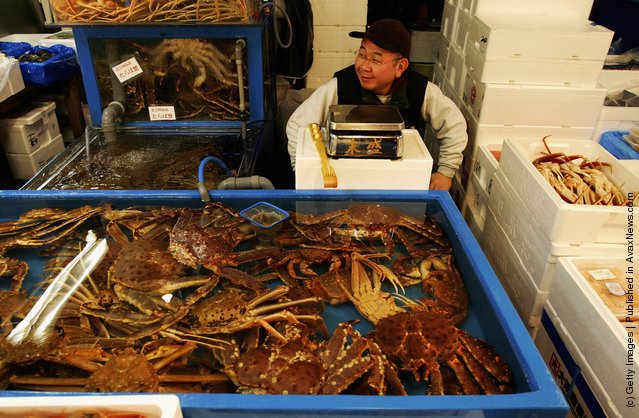
A fishmonger sits amongst crabs in his store at the Tsukiji Fish Market February 17, 2006 in Tokyo, Japan. (Photo by Cameron Spencer/Getty Images)
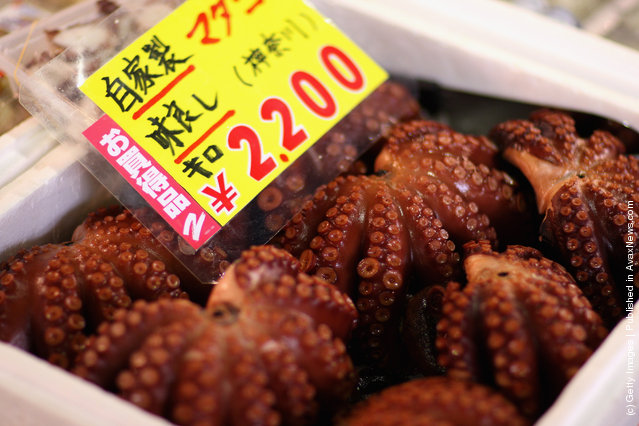
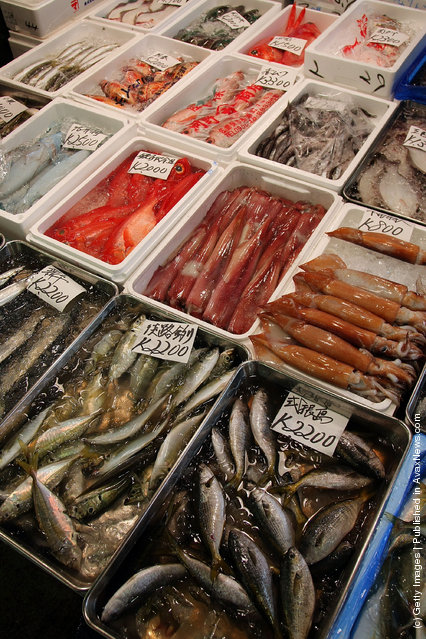
Fish and seafood on display at Tsukiji Fish Market on July 17, 2008 in Tokyo, Japan. (Photo by Koichi Kamoshida/Getty Images)
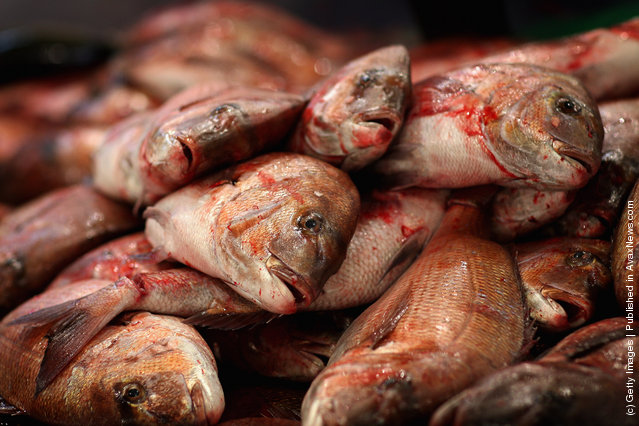
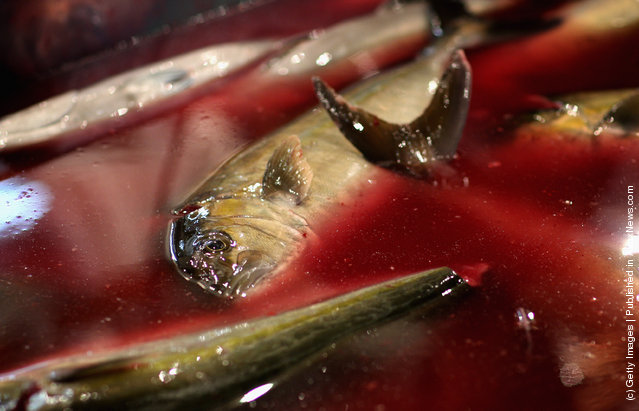
Bloody fish lie ready to be cleaned at Tsukiji Fish Market on October 30, 2008 in Tokyo, Japan. (Photo by Chris Jackson/Getty Images)
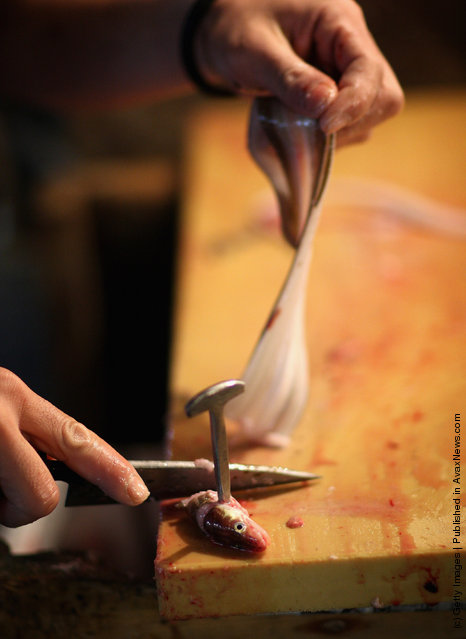
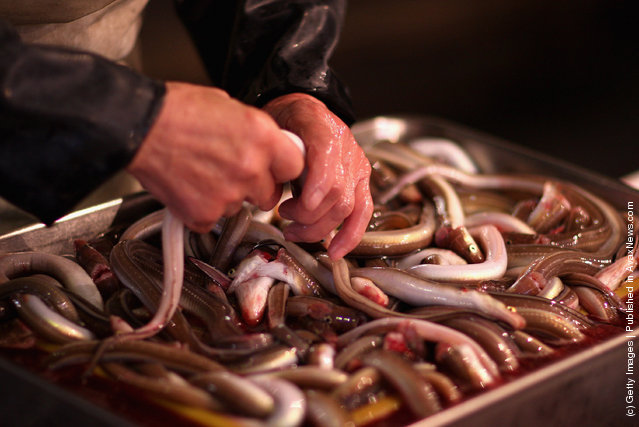
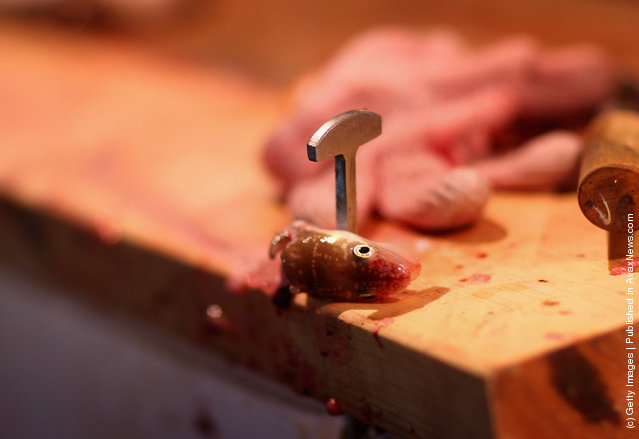
Workers prepare fish at Tsukiji Fish Market on October 30, 2008 in Tokyo, Japan. (Photo by Chris Jackson/Getty Images)
19 Jul 2011 12:29:00,
post received
0 comments
